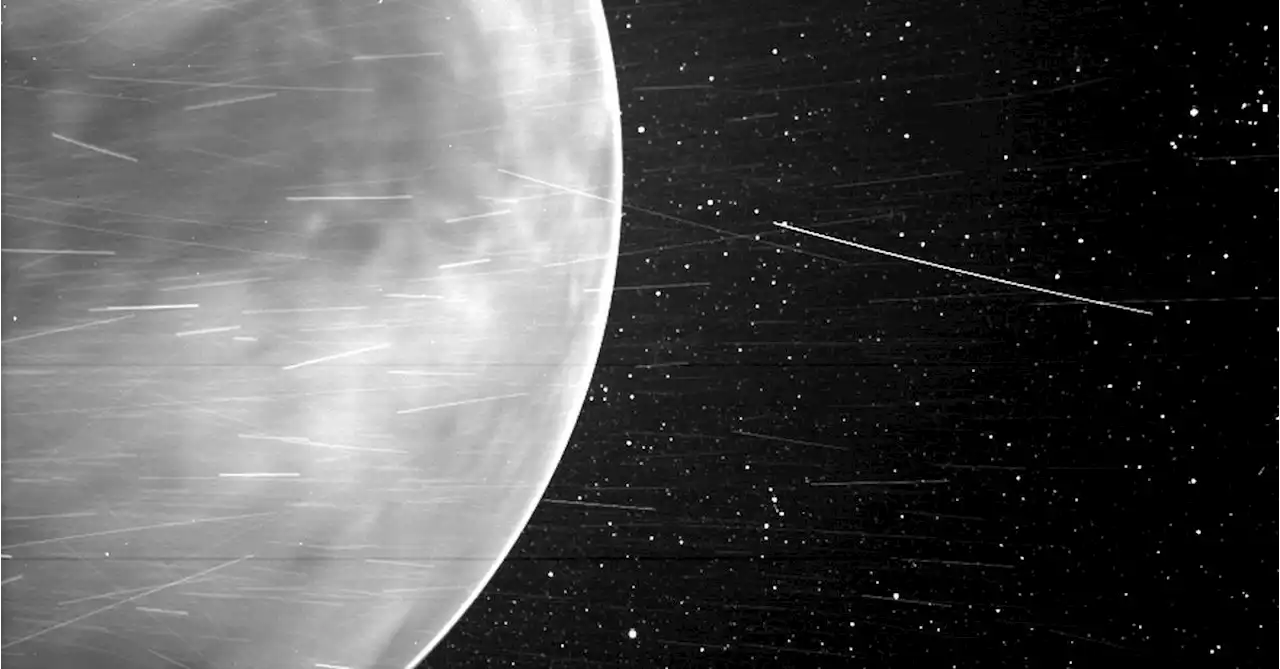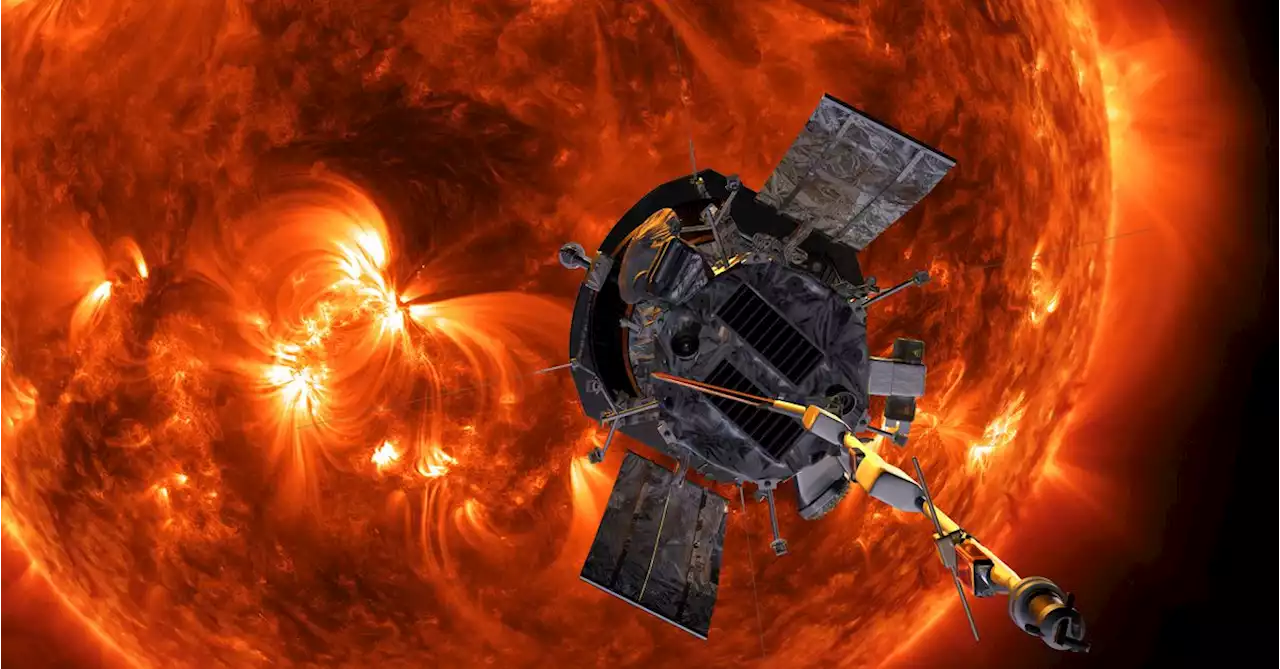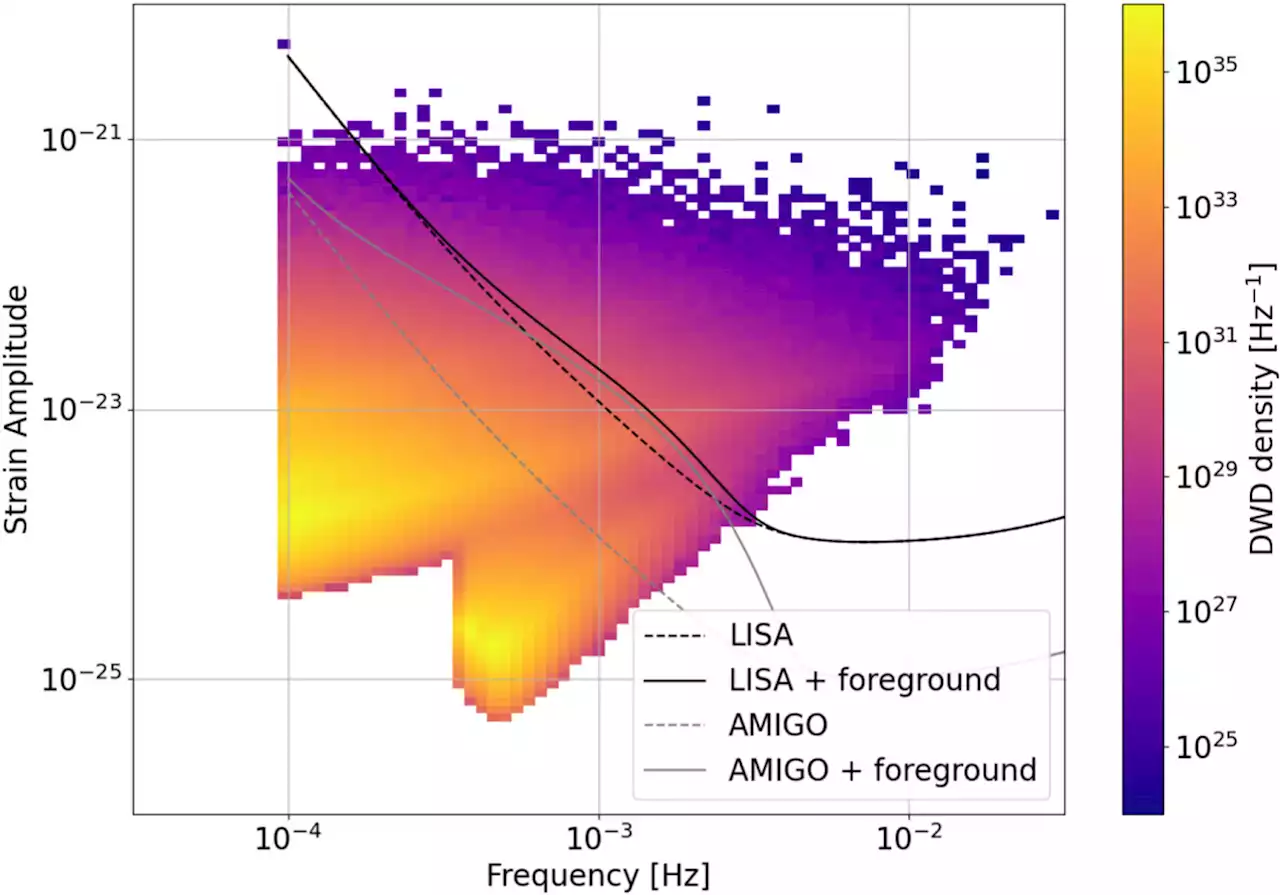Astronomers using simulated data have produced a glimpse of the sky as it would appear in gravitational waves, cosmic ripples in space-time generated by orbiting objects. The image shows how space-based gravitational wave observatories expected to launch in the next decade will enhance our understanding of our galactic home.
Since 2015, ground-based observatories have detected about a hundred events representing the mergers of systems that pair stellar-mass black holes, neutron stars, or both.
Watch as gravitational waves from a simulated population of compact binary systems combine into a synthetic map of the entire sky. Such systems contain white dwarfs, neutron stars, or black holes in tight orbits. Maps like this using real data will be possible once space-based gravitational wave observatories become active in the next decade. Brighter spots indicate sources with stronger signals and lighter colors indicate those with higher frequencies.
Using data simulating the expected distribution and gravitational wave signals of these systems, the team developed a way to combine the data into an all-sky view of the galaxy's UCBs. A
Singapore Latest News, Singapore Headlines
Similar News:You can also read news stories similar to this one that we have collected from other news sources.
 Why The Earliest Galaxies Are Sparking Drama And Controversy Among AstronomersThe James Webb Space Telescope is not only finding galaxies forming 200 to 500 million years after the Big Bang, but also that they are bigger and brighter than astronomers expected.
Why The Earliest Galaxies Are Sparking Drama And Controversy Among AstronomersThe James Webb Space Telescope is not only finding galaxies forming 200 to 500 million years after the Big Bang, but also that they are bigger and brighter than astronomers expected.
Read more »
 Turkish astronomers investigate open cluster NGC 2509Using data from ESA's Gaia satellite, astronomers from the Istanbul University have inspected a Galactic open cluster known as NGC 2509. Results of the study, published September 10 on the pre-print server arXiv, deliver important insights into the structural and astrophysical parameters of this cluster.
Turkish astronomers investigate open cluster NGC 2509Using data from ESA's Gaia satellite, astronomers from the Istanbul University have inspected a Galactic open cluster known as NGC 2509. Results of the study, published September 10 on the pre-print server arXiv, deliver important insights into the structural and astrophysical parameters of this cluster.
Read more »
 Astronomers investigate spectral evolution of XTE J1810–189Using the Neutron star Interior Composition Explorer (NICER) onboard the International Space Station (ISS), European astronomers have performed spectral analysis of a low-mass X-ray binary known as XTE J1810–189. Results of the study, available in a research paper published September 13 on the preprint server arXiv, shed more light on the spectral evolution of this system.
Astronomers investigate spectral evolution of XTE J1810–189Using the Neutron star Interior Composition Explorer (NICER) onboard the International Space Station (ISS), European astronomers have performed spectral analysis of a low-mass X-ray binary known as XTE J1810–189. Results of the study, available in a research paper published September 13 on the preprint server arXiv, shed more light on the spectral evolution of this system.
Read more »
 Sun probe surprises NASA with incredible photo of VenusThe Parker Solar Probe might’ve witnessed something new on Earth’s neighbor
Sun probe surprises NASA with incredible photo of VenusThe Parker Solar Probe might’ve witnessed something new on Earth’s neighbor
Read more »
 NASA’s newest spacecraft will fly through the Sun’s scorching hot atmosphereThe Parker Solar Probe is getting closer to our star than any vehicle has before.
NASA’s newest spacecraft will fly through the Sun’s scorching hot atmosphereThe Parker Solar Probe is getting closer to our star than any vehicle has before.
Read more »
